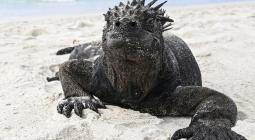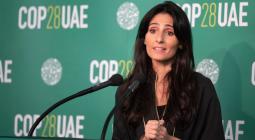10 ways the climate crisis and nature loss are linked.
The natural world is caught in a vicious cycle – extreme weather is destroying natural habitats and wildlife, yet these are crucial to fighting the climate crisis
Nature loss and the climate crisis are locked in a vicious cycle. These two issues are separate yet inextricably linked. As the climate crisis escalates, natural habitats are being destroyed. This in turn exacerbates the climate crisis and loss of wildlife. Here are 10 ways the two issues are connected:
Wildfires destroy ecosystems
Uncontrollable wildfires are becoming more frequent and more extensive – in 2021, there were even reports of smoke reaching the north pole for the first time. The climate crisis is creating tinderbox conditions in which wildfires start, including more drought, higher air temperatures and strong winds. A quarter of landscapes are facing longer fire seasons. Wildfires wreak havoc not only on human health and infrastructure, but also on the environments they burn. The Australian bushfire season of 2019 and 2020 resulted in nearly 3 billion animals being killed or displaced, according to estimates by scientists, while carbon emissions from wildfires are at an all-time high.
Degraded landscapes lead to more fires
Humans have modified landscapes in a way that makes them more vulnerable to wildfires. For example, scientists warn that recent fires in Hawaii were so intense because of the invasive grasses that now cover a quarter of the islands. In Portugal, which has also seen extremely destructive wildfires in recent years, large plantations of fast-growing and flammable eucalyptus trees have been grown to supply the country’s significant paper pulp industry. This has made the country less resilient to wildfires, and authorities now plan to create more biodiverse forests populated with fire-resistant oak and chestnut trees. Degraded ecosystems are generally more flammable, with more fires causing more landscape damage. Better landscape management and supporting natural landscapes is key, experts say.
Destroyed terrestrial landscapes cannot store carbon
Wild landscapes are home to wildlife but many, such as peatlands, permafrost and forests, are also carbon-rich. These living systems – sometimes referred to as “nature-based solutions” – suck up carbon dioxide and lock it in waterlogged soils and trees. According to the UN, the land and ocean suck up more than half of carbon emissions. So destroying these landscapes, whether by fire, industrial farming or the extraction of natural resources, results in carbon being released.
Heat damages and kills wildlife
As temperatures inch up year by year, animals are having to adapt their behaviour to cope with the changes. In Greece, research suggests brown bears are more likely to be active at night. African wild dogs have less time to hunt during the day due to rising temperatures. Nearly every sea turtle born in Florida in the past few years has been female. Research is just starting to scratch the surface in terms of understanding how heat is restructuring wildlife populations. Heat-induced stress is likely to cause all kinds of problems, including loss of fertility, immunity and increased mortality.
Marine heatwaves destroy the ocean
We often think about wildlife on land because it’s more visible, but many scientists are even more worried about what is happening in our oceans. Marine heatwaves have been recorded in New Zealand, the UK and Australia in the past few months. In 2021, more than 1 billion marine animals were believed to have died along Canada’s Pacific coast as temperatures reached 40C (104F). Warming of 2C is expected to essentially wipe out tropical corals reefs, which have the highest biodiversity of any ecosystem globally. Coral reefs are important fish nurseries and help feed more than 500 million people worldwide, most of whom are in poor countries.
Destroyed oceans cannot store carbon The ocean is the largest store of carbon in the world. But it is absorbing too much carbon from the atmosphere, making the seas more acidic, with widely documented negative impacts on marine life. Overexploitation is exacerbating these problems, making oceans even more ecologically poor. A study found fishing boats that bottom-trawl the ocean floor release as much carbon dioxide as the aviation industry. The UK has lost 92% of its seagrass in the past two centuries due to a combination of factors, including sewage discharges, nutrients running off farmland and coastal developments. This matters because forests of seagrass are believed to suck up carbon four times faster than forests on land.
Loss of animals from forests reduces the carbon they can store
Poaching and the loss of fruit-eating monkeys and birds in tropical forests is driving up carbon emissions, according to research published in Science Advances. The biggest creatures, such as tapirs and toucans – which have suffered significant losses from hunting – disperse the seeds of the longest-lived hardwood trees, which sequester the most carbon. Hardwood trees are being replaced with softwood trees, which have smaller seeds and store less carbon. Researchers looked at the Atlantic rainforest in Brazil, where 95% of trees need animals to disperse seeds. The paper suggests between 10% to 15% of carbon stored in the original forest has been lost.
Extreme weather makes land restoration even harder
A third of climate mitigation over the next decade could come from restoring nature so that it can suck carbon out of the atmosphere and into the ocean, soils and vegetation. Several scientific papers propose mass tree-planting as a way to store more carbon. However, hot weather and drought makes land restoration harder. The UK’s chief plant health officer warned in 2022 that the country’s tree-planting ambitions were at risk because of drought. Arid conditions leave young saplings susceptible to disease, and the climate crisis is also causing certain pests to thrive.
Extreme weather is pushing people into new areas
Last year, the number of people displaced around the world topped 100 million for the first time, according to the UN. The climate crisis is one of the reasons for people being displaced, alongside political conflicts, poverty and lack of resources. In north-west Africa, rising sea levels, drought and desertification are forcing more people to leave their homes. In South Asia, increased temperatures, more frequent cyclones and flooding caused by melting glaciers are among the drivers of human migration. Among many other problems, the displacement of people risks disturbing areas that were previously wild, particularly where there is a lack of essential services such as waste removal and water.
The amount of land needed to grow food is expanding
The climate crisis means that regions previously unsuitable for farming are now suitable for agriculture, which could have a significant impact on nature, according to research published in 2020. These new agricultural “frontiers” are located mostly in upper latitudes in the northern hemisphere and tropical mountain regions, including in the tropical Andes, central Asia and the Horn of Africa. Many of these regions harbour global biodiversity hotspots as well as critical bird habitats, researchers say.
Cover photo: The age of extinction is supported by the guardian.org





